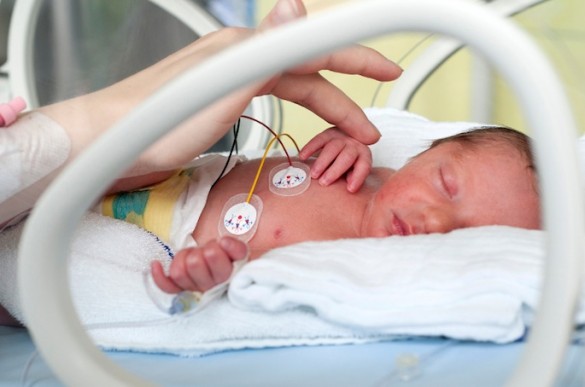
A non-invasive measure of electrical brain activity in preterm infants predicts cognitive and communication functioning during early childhood, according to a new Vanderbilt University study.
Nathalie Maitre, M.D., Ph.D., assistant professor of Pediatrics, and colleagues studied 57 preterm infants in the neonatal intensive care unit (NICU) using event-related potential (ERP) methodology, a type of electroencephalography. They quantified ERP responses to speech sounds before discharge, and followed up with standardized neurodevelopmental assessments at 12 and 24 months. They found that cortical sound differentiation measures add to the predictive value of quantitative models that also include gestational age at birth and age at ERP.
The study, reported in the September issue of Developmental Medicine & Child Neurology, establishes ERP methodology as a valuable tool to assess brain function in the NICU and predict meaningful outcomes. ERP methodology may facilitate the identification of infants at high risk for neurodevelopmental delays and aid in the assessment of interventions to improve developmental outcomes.
This research was supported by a Turner-Hazinski Award from the Vanderbilt Department of Pediatrics and by National Institutes of Health grants (ES013730, RR000095, HD015052, RR024975).
Send suggestions for articles to highlight in Aliquots and any other feedback about the column to aliquots@vanderbilt.edu















